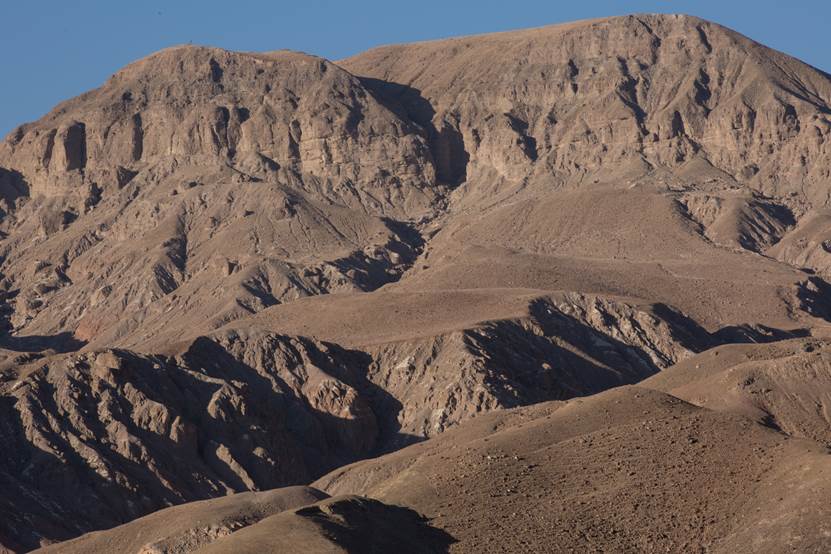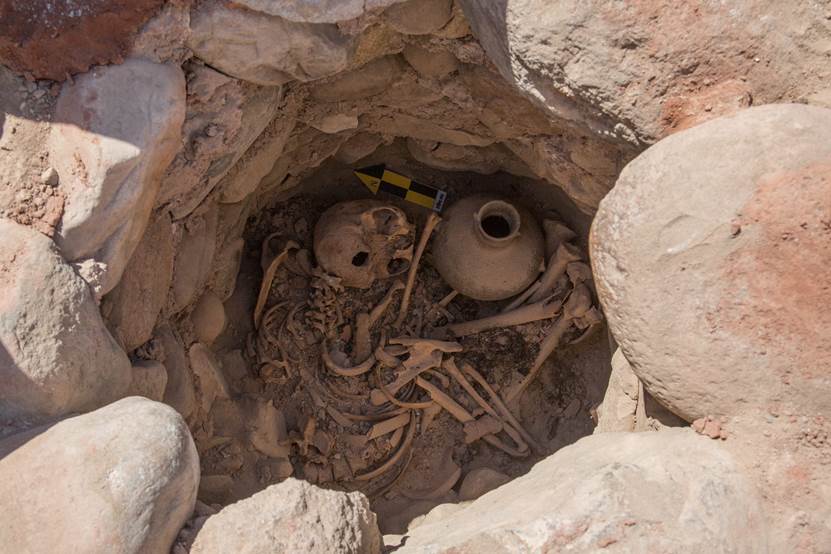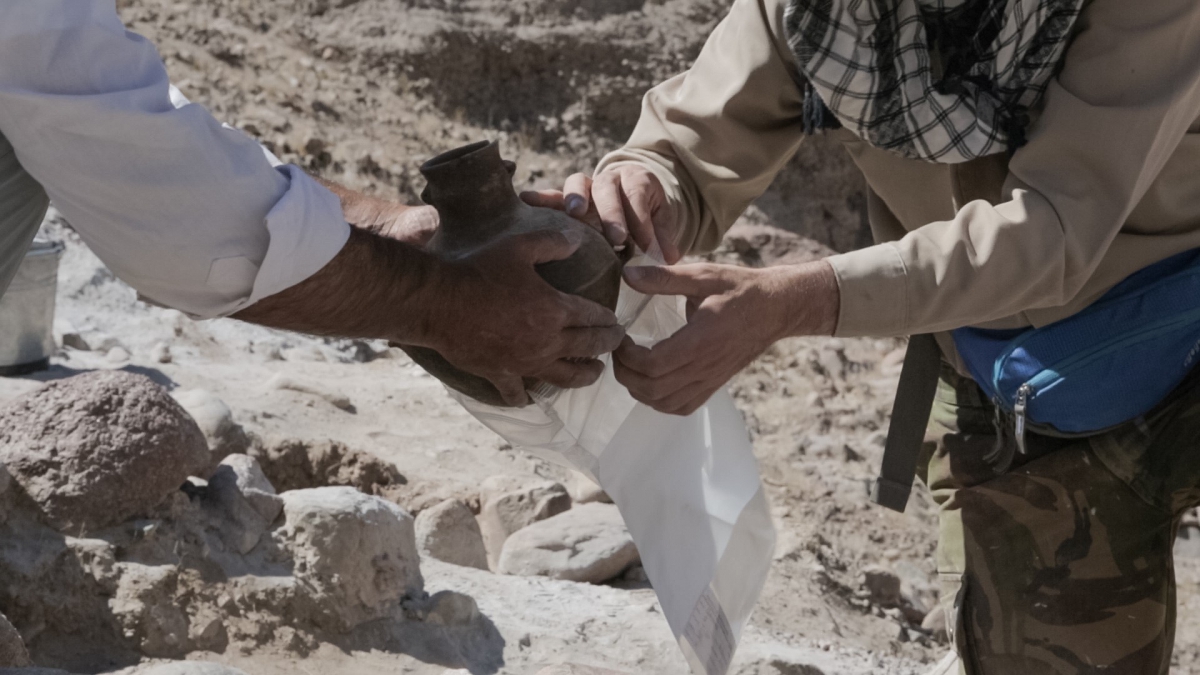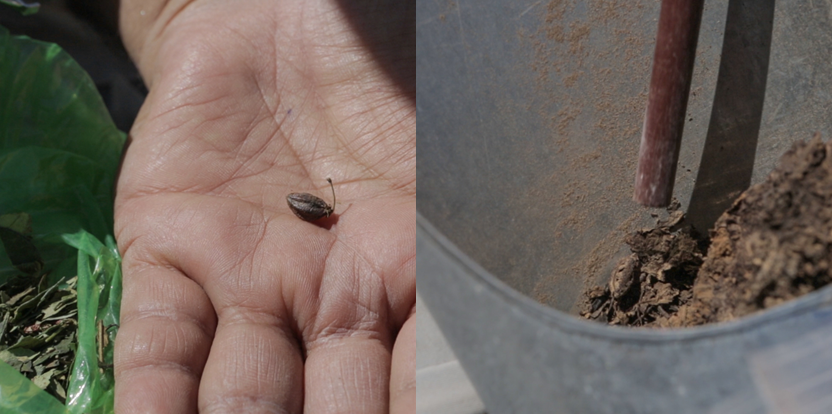Were These Peruvian Mummies Climate Change Nomads?
Words and photos by Lisa Milosavljevic
ROM Ancient (@ROMAncient) is in southern Peru at the 1,400 year old archaeological site of Quilcapampa until the end of August 2016. This is a ROM-led project with Justin Jennings, curator of New World Archaeology. The project is run in collaboration with Peruvian and North American colleagues, and is now in its fourth field season. Follow the international team on social media with #ROMPeru on Twitter and Facebook.

Caption: The Siguas Valley is a dry and arid environment. Ice core analysis shows that the landscape has not changed much from 1,400-years-ago, when people occupied the town of Quilcapampa.
Beth Koontz-Scaffidi is the bioarchaeologist on the Quilcapampa project. Analyzing the human bones, she adds missing links to the larger story of these people, such as their diet, health and where they lived. From a survey conducted in the 2013 field season, the crew identified a cemetery situated on top a steep climb that overlooks the 1,400-year-old town of Quilcapampa. Finding these tombs was aided by the scattering of sun-bleached human bones and broken ceramics; souvenirs looters left behind in search of grave goods. What they found fired-up new research questions.

Caption: Beth Koontz-Scaffidi is an anthropological bioarchaeologist and PhD Candidate in the Department of Anthropology at Vanderbilt University, examining health inequality and access to food in prehistoric states, empires, religions and other institutions.
These human burials are referred to as “cist tombs”, a broad category of subterranean spaces that are tightly sized for a body and offerings. These particular tombs are circular-shaped, lined with stone and hold mummified bodies that were bound into a fetal position. The team expected the tombs to be from the Middle Horizon Period (600-1000 AD), the same time that Quilcapampa was constructed. However, ceramics with Late Intermediate Period (1000-1476 AD) designs have been uncovered. Radio carbon dates tell us that these people returned to Quilcapampa, 200 years after it was abandoned.

Caption: Inside the opened cist tomb with a north arrow and labeled photo board (out of picture) to photo document the interior before excavation begins.
This year, ten more tombs have been excavated and Beth has had the chance to analyze some of the bones. She is finding bacterial infections, caused by immune system deficiencies and poor diets. There is evidence of developmental issues from childhood, malformations among children, and high infant mortality. Severe arthritis in older individuals indicates that this population had intensive activities of collecting and transport food and water, requiring them to walk up and down the steep slopes of the rugged terrain at Quilcapampa. But why is this happening?

Caption: This closed-neck jar is characteristic of the local Late Intermediate Period and was found inside the tomb.

Caption: Coca has been used for thousands of years, and it continues to be used as an energizing and medicinal plant in Peru. On the left is a seed from a bag of dried coca that one of the archaeologists was carrying. On the right is a preserved coca seed found in the 700-year-old tomb, an offering left with the body.
Between 1100-1300 AD, there was a little ice age that made the environment colder and drier. During this climatic change, there was more violence between groups, people couldn't produce enough food and they were not getting enough to eat. The Quilcapampa bones do not show signs of violence, although it is common for the Late Intermediate Period in other areas. Beth believes that people could be living in these hard-to-reach places because of fear from other groups. When the Middle Horizon state organization collapsed, people broke out into small collective groups, leaving behind burials that look like they might belong to small families.
The excavation project continues to look at Wari culture, which influenced a way of life throughout the south-central Andes in the Middle Horizon, but also at how the collapse of the Wari state empire affected peoples lives. Who was living here? Are they ancestors of people who lived at Quilcapampa? If so, why did they come back? What is known is that these were people who were working incredibly hard to eek out an existence. With violence and food shortages occurring elsewhere during the time of climatic change and social division, Quilcapampa could have been a safe haven for these people.
Note: Excavations have not turned up the human remains of the people living during the Middle Horizon Period at Quilcapampa. This would be a valuable find, as it would allow for a comparative analysis of the Late Intermediate Period bones with those from the Middle Horizon Period. This would allow the bioarchaeologists to see to what degree the diet and health of the individuals changed during the Late Intermediate.
Watch the video to see one of the tombs being excavated from August 2016 by Justin Jennings, Willy Yepez Alvarez and Moses Efrain Castillo.
